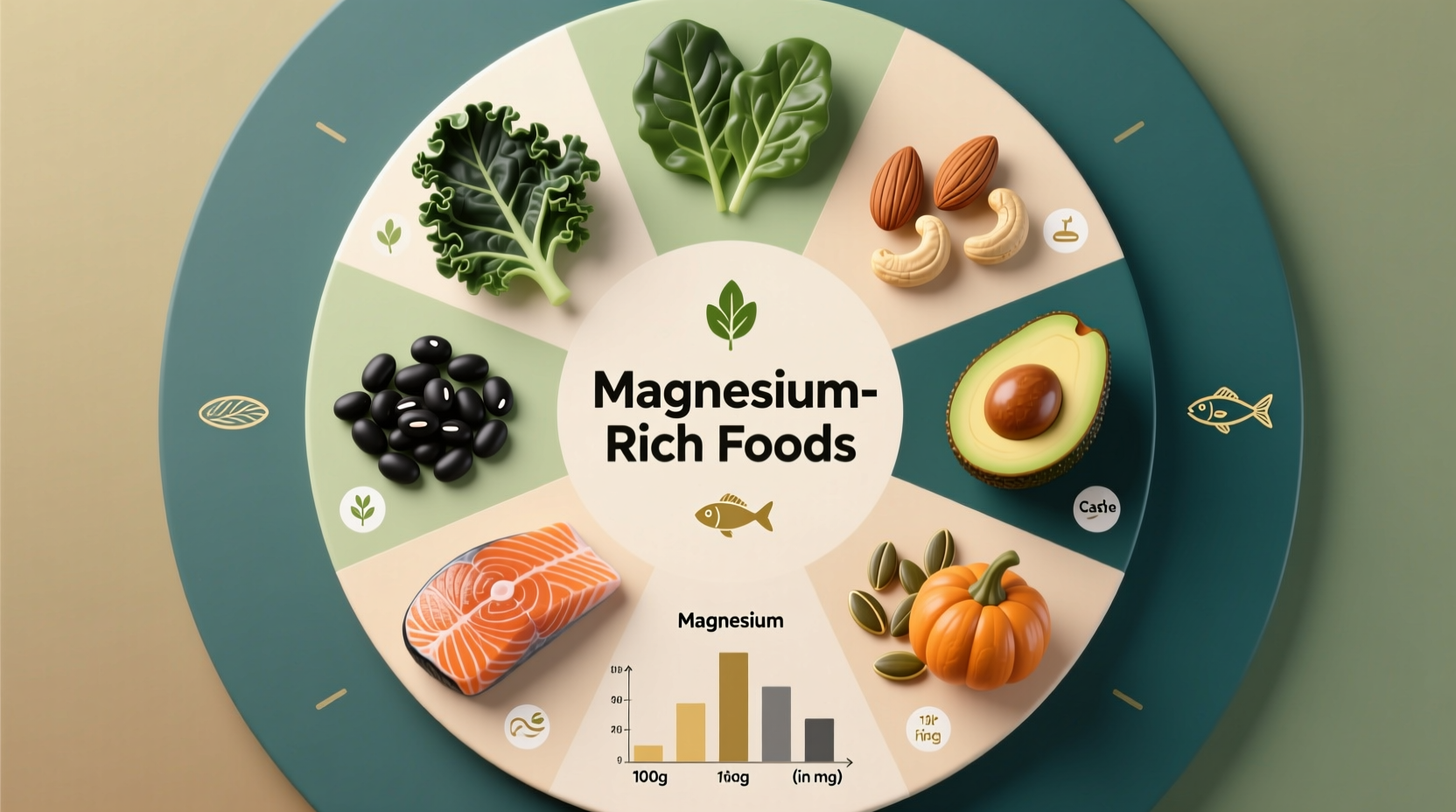Discover how to naturally boost your magnesium intake with science-backed food sources that support energy production, muscle function, and heart health. This guide provides exact nutrient values, practical meal integration tips, and evidence-based recommendations to help you meet your daily magnesium requirements through food alone.
Why Magnesium Matters for Your Health
Magnesium serves as a cofactor in more than 300 enzymatic reactions in your body, directly influencing energy metabolism, protein synthesis, and nerve function. Research from the National Institutes of Health confirms that adequate magnesium intake correlates with reduced risk of hypertension, type 2 diabetes, and cardiovascular disease. When your diet consistently provides sufficient magnesium, you may experience improved sleep quality, reduced muscle cramps, and better exercise recovery.
| Age/Gender | Daily Magnesium Requirement | Primary Food Sources |
|---|---|---|
| Men (19-30 years) | 400 mg | Spinach, pumpkin seeds, black beans |
| Women (19-30 years) | 310 mg | Almonds, avocado, edamame |
| Men (31+ years) | 420 mg | Swiss chard, cashews, lentils |
| Women (31+ years) | 320 mg | Dark chocolate, quinoa, halibut |
| Pregnant Women | 350-360 mg | Chia seeds, kidney beans, mackerel |
This nutrient requirement chart reflects current Dietary Reference Intakes established by the National Academies of Sciences, Engineering, and Medicine. Requirements increase slightly during pregnancy and for athletes due to higher metabolic demands.
Top Magnesium Food Sources by Category
Nuts and Seeds
Pumpkin seeds deliver an impressive 156mg of magnesium per ounce (35% of daily value), making them the most concentrated natural source. Almonds (80mg per ounce), cashews (74mg), and chia seeds (64mg per ounce) provide substantial amounts while offering healthy fats and fiber. A study published in the Journal of the American College of Nutrition found that regular nut consumption correlates with higher magnesium status in adults.
Leafy Green Vegetables
Spinach contains 157mg per cooked cup due to magnesium's central role in chlorophyll structure. Swiss chard (150mg per cooked cup) and kale (47mg per cooked cup) provide significant amounts alongside calcium and potassium. Cooking greens increases magnesium bioavailability by breaking down cell walls - steaming preserves more nutrients than boiling.
Legumes and Whole Grains
Black beans (120mg per cup), edamame (100mg per cup), and lentils (71mg per cooked cup) offer magnesium with plant-based protein. Whole grains like quinoa (118mg per cooked cup) and brown rice (84mg per cooked cup) provide sustained energy release. The USDA FoodData Central database confirms these nutrient values through laboratory analysis of commonly consumed portions.
Other Magnesium Powerhouses
Avocado (58mg per medium fruit), dark chocolate (64mg per ounce of 70% cocoa), and fatty fish like mackerel (82mg per 3-ounce serving) round out the top dietary sources. Interestingly, the magnesium content in plant foods has declined by approximately 25% since 1940 due to soil depletion, according to research from the University of Texas, making conscious dietary choices more important than ever.

Practical Ways to Increase Your Magnesium Intake
Start your day with a magnesium-boosting smoothie: blend spinach (157mg), avocado (58mg), and chia seeds (64mg) for nearly 30% of your daily requirement. For lunch, try a black bean salad with pumpkin seeds and dark leafy greens. Dinner options include baked salmon with roasted Swiss chard and quinoa. Snack on a small handful of almonds (80mg) with a square of dark chocolate (64mg).
Maximize absorption by pairing magnesium-rich foods with vitamin D sources like fatty fish or fortified foods. Avoid consuming high-phytate foods (like whole grains) and calcium supplements simultaneously with magnesium-rich meals, as they can compete for absorption. Soaking nuts and seeds before consumption reduces phytic acid content, improving magnesium bioavailability by up to 50% according to research from the International Journal of Molecular Sciences.
Special Considerations for Magnesium Absorption
Certain populations require special attention to magnesium intake. Athletes lose magnesium through sweat - endurance athletes may need up to 20% more than sedentary individuals. Older adults often have reduced absorption efficiency due to age-related changes in gut function. Individuals with type 2 diabetes frequently experience increased urinary magnesium excretion. Those taking proton pump inhibitors for acid reflux may have reduced magnesium absorption as these medications alter stomach pH necessary for mineral uptake.
While food sources should be your primary magnesium strategy, supplementation becomes necessary in specific cases. The Mayo Clinic advises consulting a healthcare provider before starting magnesium supplements, particularly if you have kidney disease. Food-based magnesium rarely causes adverse effects, as excess amounts are efficiently excreted by healthy kidneys.
When Food Sources Might Not Be Enough
Though most people can meet magnesium requirements through diet, certain conditions warrant professional evaluation. Chronic diarrhea, Crohn's disease, and celiac disease impair magnesium absorption. Long-term use of diuretics or certain antibiotics increases magnesium excretion. If you experience persistent muscle cramps, fatigue, or irregular heartbeat despite consuming magnesium-rich foods, consult a healthcare provider for assessment rather than self-supplementing.











 浙公网安备
33010002000092号
浙公网安备
33010002000092号 浙B2-20120091-4
浙B2-20120091-4